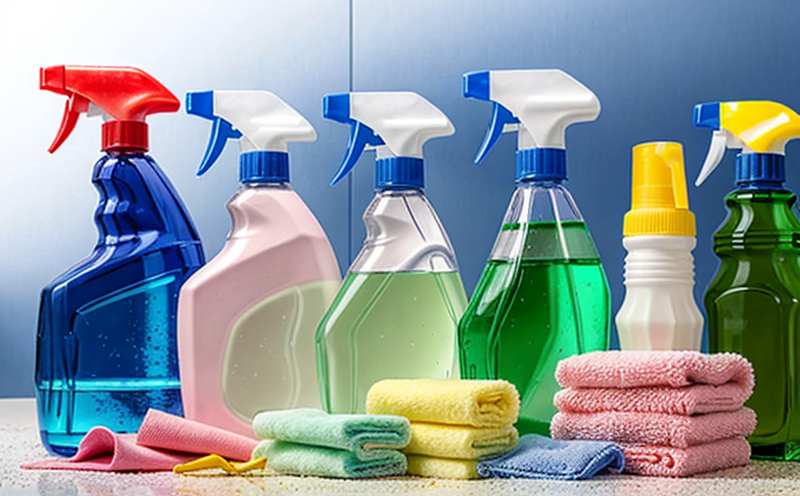Tamper-Evident Packaging Testing in Cleaning Products
In the realm of consumer products and product safety testing, tamper-evident packaging is a crucial aspect to ensure the integrity and safety of cleaning products. This form of packaging is designed to provide visible evidence that any opening or manipulation has occurred, thereby safeguarding consumers from potential tampering risks.
For cleaning products, which are often used in households where children may have access, tamper-evident packaging serves a dual purpose: it enhances product safety and boosts consumer confidence. The testing of these packages involves rigorous evaluations to ensure they meet stringent standards for integrity and ease of use.
The process begins with selecting the appropriate specimen for testing, which typically includes examining the closure mechanism of the container. This involves assessing how effectively the cap or lid can be sealed, ensuring it cannot be easily opened without visible signs of manipulation. Specimen preparation often involves opening and resealing multiple packages to evaluate the effectiveness of the tamper-evident feature.
Instrumentation plays a vital role in this testing process; devices such as torque testers are used to measure the force required to open the package, ensuring it adheres to set standards. Additionally, visual inspections and microscopic analyses may be conducted to identify any signs of tampering or damage.
The results of these tests are critical for compliance with various international standards, including ISO 17786-4:2019, which specifies requirements for child-resistant closures on containers intended for household use. Compliance ensures that the product not only meets but exceeds consumer expectations in terms of safety and integrity.
| Standard | Description |
|---|---|
| ISO 17786-4:2019 | International standard for child-resistant closures on containers. |
| ASTM D3573-18 | American Society for Testing and Materials standard for packaging tests. |
Why It Matters
The importance of tamper-evident packaging in cleaning products cannot be overstated. Consumer trust is a cornerstone for any successful product, and ensuring the integrity of the package directly impacts this trust. The potential risk of tampering can lead to serious consequences if not addressed properly.
For quality managers and compliance officers, adhering to these standards ensures that products meet both legal requirements and consumer expectations. By testing packaging rigorously, manufacturers can mitigate risks and enhance brand reputation. For R&D engineers and procurement teams, understanding the nuances of tamper-evident packaging allows for more informed decision-making processes.
From a practical standpoint, tamper-evident packaging helps prevent unauthorized access to potentially harmful substances within cleaning products. This is especially critical in households with young children or individuals who may have limited cognitive abilities. The visible evidence it provides serves as an immediate deterrent against tampering and encourages responsible behavior.
- Enhances consumer confidence
- Maintains product integrity
- Avoids legal repercussions
- Protects brand reputation
Applied Standards
| Standard | Description |
|---|---|
| ISO 17786-4:2019 | International standard for child-resistant closures on containers. |
| ASTM D3573-18 | American Society for Testing and Materials standard for packaging tests. |
International Acceptance and Recognition
The use of tamper-evident packaging in cleaning products is recognized globally. Countries such as the United States, Canada, and various European nations adhere to stringent standards for product safety. The acceptance of these packages extends beyond national borders, with international bodies like ISO and ASTM leading the way.
Manufacturers and distributors must ensure their products meet not only local regulations but also international standards. This ensures that cleaning products are safe and effective across different markets. The recognition of tamper-evident packaging in these global contexts underscores its importance in maintaining consumer safety and trust.
- United States
- Canada
- European Union Countries





